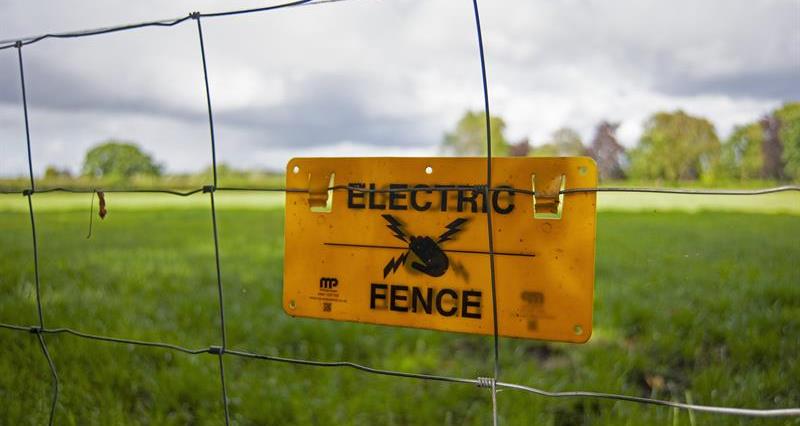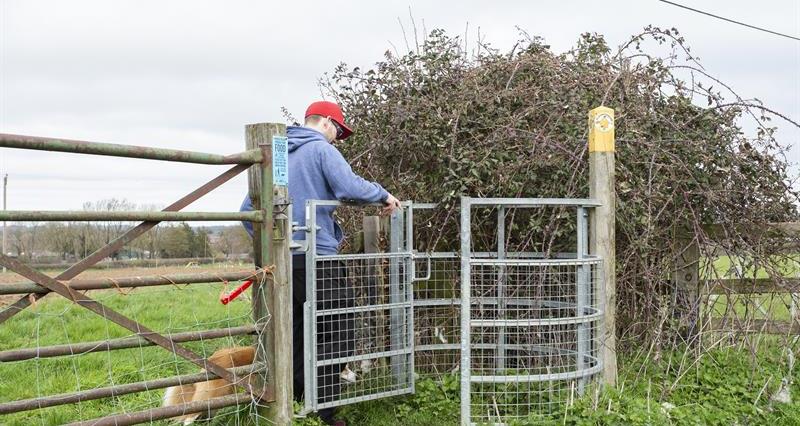Electric fencing is an incredibly versatile and increasingly essential tool for those wishing to manage pasture and grazing crops quickly and efficiently. But in order to get the most out of the technology, it’s worth keeping up to date with what’s available.
New Zealander William Gallagher (whose name is now globally synonymous with electric fencing) initially designed a simple energiser powered by a car ignition to prevent horses damaging his car in 1936. This technology was quickly adapted to power fencing, now commonplace on farms across the world.
Dairy farms have been using the versatility of electric fence systems for decades to manage rotational grazing with a single strand to good effect.
Permanent vs semi-permanent
“Lots of sheep and beef farms have also used electric fencing, but recently there’s been a real upsurge in the type and quality of electric fencing equipment available, not least thanks to solar units and other clever solutions, often from the Southern Hemisphere,” explains Emily Padfield, who farms alongside her husband Mark Warner in Warwickshire.
The couple have recently made the switch from all permanent post and wire fencing to include multiple types of electric fencing to allow for mob-grazing sheep, cattle and goats. Emily is currently doing a Nuffield Farming Scholarship on the subject.
“We are amazed at how quickly stock learn to respect it and how easy and quiet they are on daily moves.”
Warwickshire farmer, Emily Padfield
“Post and wire netting is time consuming to erect as well as being by its very nature, permanent,” explains Emily. “While our farm currently is mostly permanent post and wired, we wanted to subdivide our existing fields into smaller paddocks of around 3ha to allow for rotational grazing with the least hassle and cost, and this resulted in us opting for a mix of permanent and semi-permanent electric fencing as well as quicker-to-erect plastic post and reel systems, such as Rappa and Gallagher reel systems.
“Talking to those already using electric fencing helped a lot and we realised planning was essential in order to put the necessary infrastructure in the right places. We also spoke to Alex Brewster at Powered Pasture about what sort of fencing would suit our needs which led us down the semi-permanent route. He also recommended using Tarragate gate systems within fields which have worked really well.”
“We have recently installed one section of permanent electric boundary fence as part of a Countryside Stewardship capital grant and this will help get mains electric around the farm as a hotline for running paddocks off.”
For situations such as grazing cover crops, splitting fields for mob or rotational grazing or just securing a field with no existing boundary fencing, portable electric is an economical solution adaptable to different species and is far easier and quicker to install than semi-permanent fencing.
“With the addition of solar-powered energisers, it’s allowed us to set up outlying rotational grazing systems for crops like herbal leys and grazing elsewhere,” she adds. “However, theft is always a consideration as these units don’t come cheap.”
 How does an electric fence work?
How does an electric fence work?
In essence, an electric fence is a large open circuit waiting to be closed. An energiser sends a high-voltage pulse of electrical energy through wire, tape or rope at short intervals. The animal (or human if you’re unlucky) gets a shock when its electrons complete the circuit travelling from the energiser along the wires and through them to the ground. These electrons then pass through the soil to the earthing system and back up to the energiser.
Electric fences run on a high-voltage, low-amperage system, meaning they deliver a pulsing shock that allows the animal to back away unharmed and not be fatally injured.
“Earthing is incredibly important. An electric fence system is designed to be an open loop, but it has to be correctly earthed in order to be effective,” says Emily.
“On our clay soils it’s relatively easy to get a good earth but as the season dries out it can become more tricky. Several earthing stakes are advised, at a depth of about 6ft if possible.”
Useful resources and suppliers
(not exhaustive and local suppliers are a good place to start):
116941,116942,116943,116944
‘First impressions count’
“Essentially, electric fencing is a mental barrier and not a physical one,” Emily explains. “It works by giving a shock to the animal that touches it, training them to stay away from the fence. This is why it’s important that the voltage and energy are at the correct levels in order to give a good enough shock for this initial experience.”
“First impressions count,” warns Emily. “It’s no good turning untrained animals into a field with an electric fence unless it’s got a decent charge running through it, otherwise the animals won’t respect it and then you’re doomed. Our solar fences are often pushing out over 10,000 volts, but anything over 7,000V is good. Once they’re trained you can get away with less.”
“We are amazed at how quickly stock learn to respect it and how easy and quiet they are on daily moves – they politely wait until we have unreeled the fence and pass quietly and calmly through.”
There are two types of energisers – mains (AC) and battery-powered (DC). Although mains-powered energisers are hassle-free and more economical, battery-powered are more flexible and can also be powered by solar panels, with many manufacturers now offering all-in-one solar energisers with batteries included.
When you are choosing an energiser, you need to consider several factors, namely how many strands of wire you will be running, the total distance the fence will travel above and below ground (if using lengths of lead-out cable beneath gates), what sort of wire you are using and what animals you are keeping within the fence.
“The amount of vegetation your fence will have to deal with also has a significant bearing on what size energiser you choose,” adds Emily. “If you’re not going to be able to keep vegetation clear, then it’s worth upsizing the energiser to take that into account.”
Temporary reeled systems have really started to evolve now and while Emily and Mark still runs the tried-and-tested Rappa UTV system, they are also using hand reel systems for speed and versatility. “It means that we can further split paddocks if we need to and with cattle this is really easy as they only require one strand,” Emily explains. “For sheep it’s a little more time consuming but you can still erect a fence in as little as half an hour when needed.”






